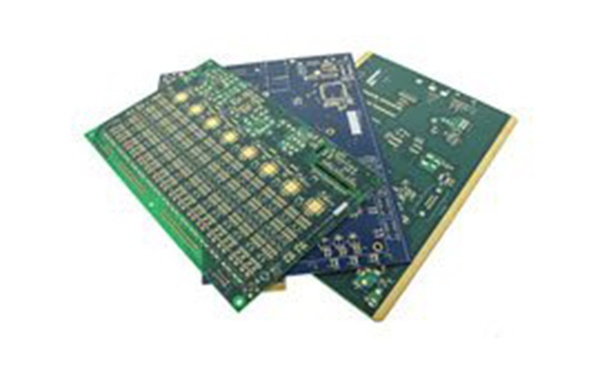Circuit Board Development Facts

Circuit Board Development Facts
PCB Facts
A printed circuit board, or PCB, is utilized to support and electrically connect electronic components using conductive pathways, tracks or signal traces etched from copper sheets laminated onto a non-conductive substrate.
Referred as printed wiring board (PWB) or etched wiring board, PCB populated with electronic components is called a printed circuit assembly (PCA). It is also known as a printed circuit board assembly (PCBA). Printed circuit boards are used in virtually all but the simplest commercially-produced electronic devices.
Avanti Circuits is a US-based PCB Manufacturer located in Phoenix, Arizona.
PCB Materials
Conducting layers are typically made of thin copper foil. Insulating layers dielectric are typically laminated together with epoxy resin prepreg. The board is typically coated with a solder mask that is green in color. Other colors that are normally available are blue and red. There are quite a few different dielectrics that can be chosen to provide different insulating values depending on the requirements of the circuit. Some of these dielectrics are polytetrafluoroethylene (Teflon), FR-4, FR-1, CEM-1 or CEM-3. Well known prepreg materials used in the PCB industry are FR-2 (Phenolic cotton paper), FR-3 (Cotton paper and epoxy), FR-4(Woven glass and epoxy), FR-5 (Woven glass and epoxy), FR-6 (Matte glass and polyester), G-10 (Woven glass and epoxy), CEM-1 (Cotton paper and epoxy), CEM-2 (Cotton paper and epoxy), CEM-3 (Woven glass and epoxy), CEM-4 (Woven glass and epoxy), CEM-5 (Woven glass and polyester). Thermal expansion is an important consideration especially with BGA and naked die technologies, and glass fiber offers the best dimensional stability.
AVANTI Circuits, utilizes the best materials for every project we undertake. Being a US-based manufacturer has its advantage versus overseas competition. Since we follow US Environmental Laws and Requirements, we use strict compliance in the use of materials and products. So we try to be Eco-friendly (Green) as much as we can be.
Design
Schematic capture or schematic entry is done through an EDA tool.
Card dimensions and template are decided based on required circuitry and case of the PCB.
Determine the fixed components and heat sinks if required.
Deciding stack layers of the PCB. 4 to 12 layers or more depending on design complexity. Ground plane and Power plane are decided. Signal planes where signals are routed are in top layer as well as internal layers.
Line impedance determination using dielectric layer thickness, routing copper thickness and trace-width. Trace separation also taken into account in case of differential signals. Microstrip, stripline or dual stripline can be used to route signals.
Placement of the components. Thermal considerations and geometry are taken into account. Vias and lands are marked.
Routing the signal trace. For optimal EMI performance high frequency signals are routed in internal layers between power or ground planes as power plane behaves as ground for AC. Gerber File generation for manufacturing.
Printed circuit assembly
After the printed circuit board (PCB) is completed, electronic components must be attached to form a functional printed circuit assembly, or PCA (sometimes called a “printed circuit board assembly” PCBA). In through-hole construction, component leads are inserted in holes. In surface-mount construction, the components are placed on pads or lands on the outer surfaces of the PCB. In both kinds of construction, component leads are electrically and mechanically fixed to the board with a molten metal solder.
There are a variety of soldering techniques used to attach components to a PCB. High volume production is usually done with machine placement and bulk wave soldering or reflow ovens, but skilled technicians are able to solder very tiny parts (for instance 0201 packages which are 0.02 in. by 0.01 in.) by hand under a microscope, using tweezers and a fine tip soldering iron for small volume prototypes. Some parts are impossible to solder by hand, such as ball grid array (BGA) packages.
Often, through-hole and surface-mount construction must be combined in a single assembly because some required components are available only in surface-mount packages, while others are available only in through-hole packages. Another reason to use both methods is that through-hole mounting can provide needed strength for components likely to endure physical stress, while components that are expected to go untouched will take up less space using surface-mount techniques.
After the board has been populated it may be tested in a variety of ways:
While the power is off, visual inspection, automated optical inspection. JEDEC guidelines for PCB component placement, soldering, and inspection are commonly used to maintain quality control in this stage of PCB manufacturing.
While the power is off, analog signature analysis, power-off testing.
While the power is on, in-circuit test, where physical measurements (i.e., voltage, frequency) can be done.
While the power is on, functional test, just checking if the PCB does what it had been designed for.
To facilitate these tests, PCBs may be designed with extra pads to make temporary connections. Sometimes these pads must be isolated with resistors. The in-circuit test may also exercise boundary scan test features of some components. In-circuit test systems may also be used to program nonvolatile memory components on the board.
In boundary scan testing, test circuits integrated into various ICs on the board form temporary connections between the PCB traces to test that the ICs are mounted correctly. Boundary scan testing requires that all the ICs to be tested use a standard test configuration procedure, the most common one being the Joint Test Action Group (JTAG) standard.